Schematic Proposal to Renovate and Expand Bibliothèque Éva-Circé-Côté—Multidisciplinary Architectural Competition
In spring 2023, the Ville de Montréal launched a three-stage, multidisciplinary architectural competition for the renovation and expansion of the Bibliothèque Saint-Charles—renamed Bibliothèque Éva-Circé-Côté—a former fire station that was transformed into a library in 1976. At the heart of the project is the desire to create a unique gathering place that encourages learning, access to information, and citizen participation in the Sud-Ouest borough.
Discover our firm’s proposed design approach, developed for the first stage of the competition.
Location
Partners
Stantec
Leroux+Cyr
Scale
2 900 m² / 24 M$
Year
2023

Aside from a regenerated gathering place for the community, the project also looks to celebrate the existing library building, which is of heritage value, and integrate it harmoniously into the surrounding park. “Like an urban agora, the new library is intended to be a central space that highlights the neighbourhood and enables it to stand out in a positive way.”
The components of the new program include:
- an indoor and outdoor agora to gather and speak;
- an idea lab for expressing ideas in the form of workshops;
- a collection of practical everyday objects for borrowing free of charge (small kitchen appliances, camping equipment, etc.), to help reduce consumption and encourage a circular economy;
- a media lab for training in media, sound, and visual technologies;
- a café;
- a large multi-purpose room;
- a section for families with an animation room and areas for toddlers;
- and a section for adults, including work areas, a silent lounge, and group rooms.

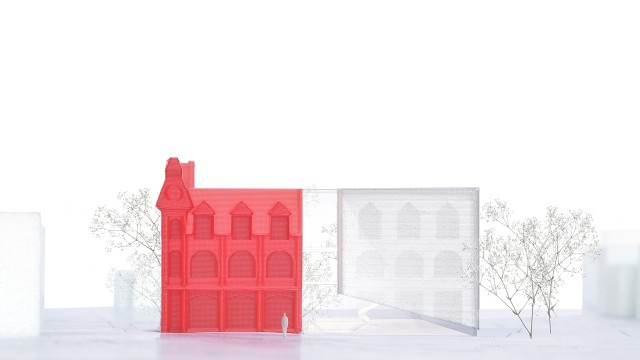
In our proposal, the historic barracks are preserved, protected, and enhanced. The extension, similar in volume to the barracks but transparent, reinterprets the architectural language of the heritage building through an entirely new and lighter approach. With its sober, translucent envelope, the new building helps frame Rue d’Hibernia and yet remains inconspicuous, to enhance the beauty of the existing building. Between the two volumes, a passageway leads to the agora and to the areas for nature and play—an open, luminous buffer zone that protects the barracks symbolically.
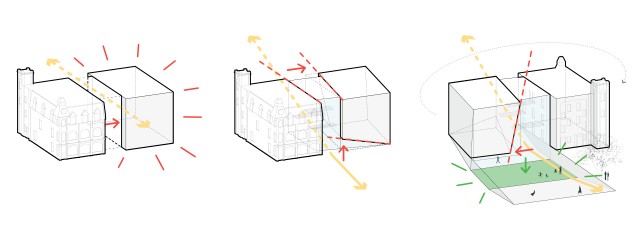
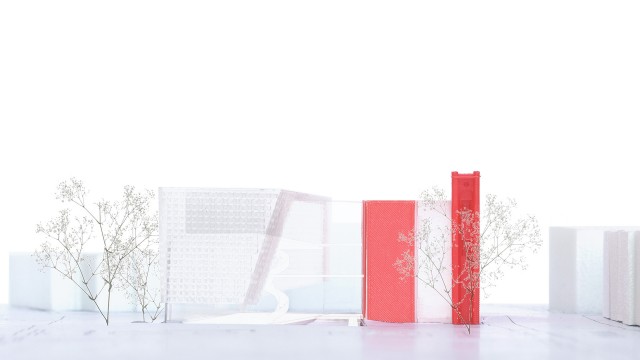
On the park side, the façade of the extension is slanted toward the public square, creating an intimate link with nature and a dialogue with the gutted tower of the former barracks. The sloped wall can accommodate projections for outdoor viewing from the agora, such that the new library will contribute to the life of the neighbourhood beyond its walls.
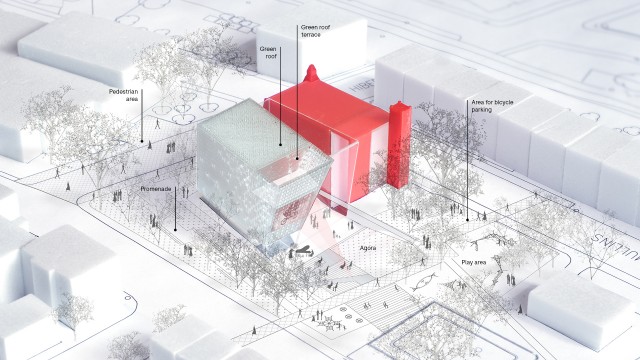

The atrium, at the heart of the project between the barracks and the new construction, unites the Centre Saint-Charles and the park—where aerial walkways form a link between past and present. The history of the original building is tangible in its exposed brick wall.
Between the atrium and the garden level, the agora lies at the intersection of the seating of the library and of the public square. The playful approach to topography energizes the site, provides access to the garden level and creates an event space at the heart of the library.
The landscape and architectural design of the approach from rue d’Hibernia reinforces the site’s permeability. Pedestrian access points are inviting and accessible, creating fluid pathways between the park, the library, the street, and the Centre Saint-Charles. In the spirit of protecting and preserving the urban forest, the play areas are integrated into the vegetation.
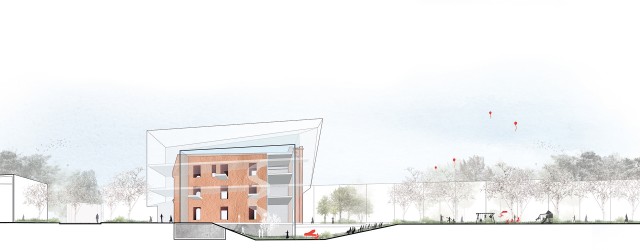
The Bibliothèque Saint-Charles is a former fire station built between 1891 and 1892 and converted in 1976.
When it opened, the library was renamed in honor of Éva-Circé-Côté (1871-1949), a local writer and journalist. As the librarian of Montreal’s first municipal facility, she firmly believed in the importance of public libraries, especially for young people.